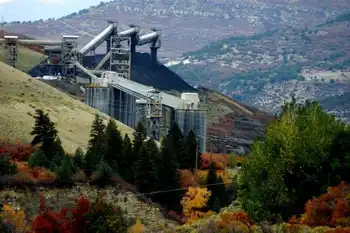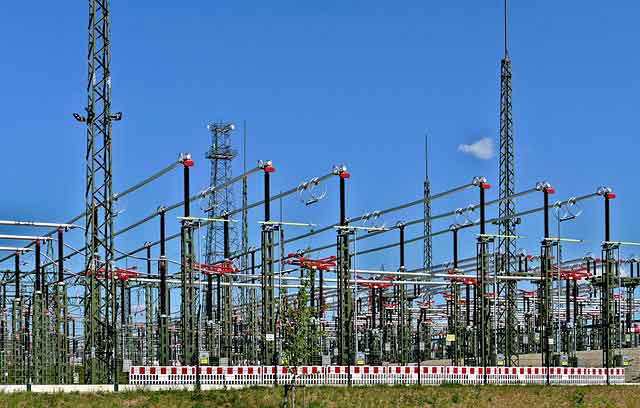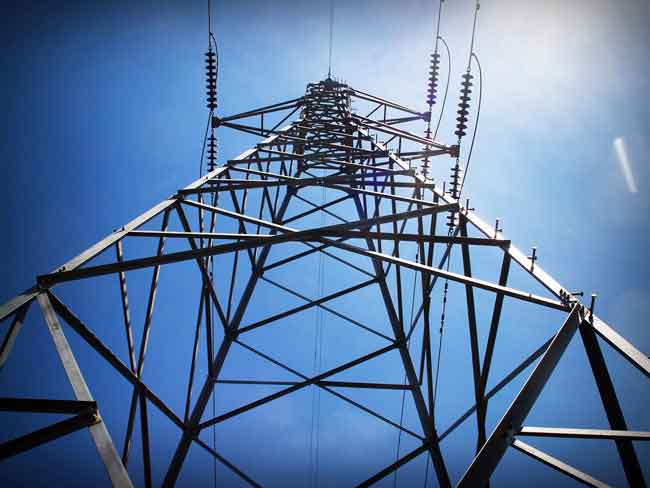Reviving Uranium City's nuclear past
Hovdebo, burly and soft-spoken, with a thick brown moustache flecked with grey, seizes a fist-sized rock and rolls it through an ominous gap between the steel and solid ground. "Wait for it," says the 48-year-old, smiling. One one thousand, two one thousand.... At six there's a distant splash, echoing up from below.
Hovdebo taps the slab with the toe of his boot, and there's a hollow echo. "Kind of an emergency patch job," he says, grinning. "That's a long way to fall."
Here at the site of the long abandoned Cinch Lake uranium mine, across the river from Uranium City in Saskatchewan's far north, the task is industrial archaeology – with, at long last, a mind to more than a quick fix.
Hovdebo, a consultant with SRK, an engineering consulting firm, has two scientists from the Saskatchewan Research Council in tow. Together, they're assessing 37 such sites here officially slated for cleanup and reclamation, left for dead in the wake of nuclear disarmament and a subsequent uranium industry collapse through the 1970s. All told, with federal and provincial money, the cleanup will cost $24.5 million.
But reports of the industry's death have been, as the saying goes, greatly exaggerated. In January 2002, the price of uranium, nuclear energy's radioactive fuel, was set at $9.60 (U.S.) per pound. A year ago, it surged to $48.60. This month, it's $120, and some projections have it hitting $200 next year.
And in a deliciously ironic twist, the forces driving the new-era uranium boom mean to save the planet, not destroy it: the quest for clean – and more – energy is slowly shaping an international governmental consensus that nuclear power, finally, is the solution.
According to the World Nuclear Association, 250 new nuclear reactors are either in the planning or proposal process worldwide (435 are currently in operation). In 2005, U.S. President George W. Bush signed an energy bill that provides loan incentives, tax credits and federal risk insurance for companies willing to build new nuclear plants – none of which have been built since the Three Mile Island accident in 1979.
In Ontario, where more than half of our electricity already comes from nuclear power, coal-fired plants are scheduled to be phased out by 2014. Environmental groups are livid at the nuclear surge, but despite their urgings, the provincial liberals have committed about $5.2 billion to refurbishing nuclear reactors, which will add about 2,000 megawatts of nuclear power capacity.
The growing fascination with nuclear power – China alone will build 50 reactors over the next few years, increasing its nuclear load fivefold – is dramatically bumping up demand for uranium, which is already in short supply. Only 55 per cent of the global uranium supply comes from mines; the rest is culled from dismantled warheads, government stockpiles and reprocessing.
And so the hunt is back on, in forgotten corners of the country and around the world, where long-silenced drills are boring into bedrock in search of new or abandoned veins – in Elliot Lake, Ont., which gave up hope as a mining centre decades ago and reinvented itself as a retirement community; in the parched high plains of Mongolia, where Canadian-based Khan Resources is reinvigorating an old Soviet-era claim; in the thick boreal forests of Frontenac County, north of Kingston; in the rich, river-veined Gatineau region of Quebec; in New Brunswick, Nova Scotia, Labrador, Nunavut, the Northwest Territories and, of course, here in Uranium City, where it all began.
"The best place to go looking for new ore is in an old mine," says Zbiegniew Wytrwal, 61. He moved to Uranium City when he was nine years old, and became a geologist at Eldorado, the biggest mine there, through the boom. He left in 1980, just before uranium began its freefall into economic oblivion. Twenty-seven years later, much to his own shock, he's come full circle. "It was a dead industry," he says. "I never thought it would come back."
Uranium City, in the far northeast corner of Saskatchewan and connected by road in winter across frozen lakes, began as a tented outpost in 1950. Just a few years later, bathed in uranium's glow, it was a thriving hub of 5,000, complete with hotels, department stores, a dance hall, a curling rink and a movie theatre. In 1959, even Prince Philip dropped by. Just a few kilometres away from the Uranium City hub, the mine towns of Eldorado and Gunnar counted another 2,000 and 1,200 people, respectively. By the early '80s, though, anti-nuclear sentiment was gaining momentum. Even with détente looming, a near-disaster at Three Mile Island in 1979 coupled with a public weary of their cold war anxieties was cooling the prospects of a nuclear-powered future.
"There was a time when people from Uranium City were real pariahs," says Jim Kermeen, a geologist at Eldorado in the '60s. "You'd tell them you were from here, and they'd take a step back."
Even though the meltdown disaster at Chernobyl was still 3 1/2 years away, economically the uranium business was all but dead. Eldorado, operated by the Canadian government, was the biggest mine in the area, and the last to operate. It announced its closure in late 1982, and proceeded to quickly erase itself – buildings razed, shafts capped and filled – taking most of Uranium City with it. At 77, Kermeen is back in the North for the first time in almost 40 years. On a recent morning near the Eldorado site, he pointed to an expanse of blue sky where the Eldorado mine headframe once stood.
"Costs were rising, prices were low," he says. "Usually, when that happens, you close the mine on care and maintenance and wait for things to cycle back. Here, they demolished the whole thing and buried it. My opinion, and that's all it is: it was political. The stigma against anything nuclear was so strong."
Now, fewer than 100 people call Uranium City home. "Eighty-nine, last I counted," says Carolyn Lenko, the official Uranium City clerk, postmaster and lone administrative civic employee.
Uranium City is a weathered outpost now, the remains of a town slowly being swallowed by the wilderness. What's left lingers amid thick pines and brush and endless crystal blue lakes that dot the heavy bedrock like droplets on a freshly waxed car hood.
On the outskirts of town, suburban bungalows flayed by the elements and decades of neglect squat in the overgrowth, roofs caved in, windows blown out. Fractured sidewalks lead to weed-choked cul-de-sacs where no one has lived for years.
But the 89 people who remain are seeing more activity here than they have in years. A surfeit of junior exploration companies, with names like CanAlaska Uranium, Red Rock Energy and Uranium City Resources, are drilling on their claim sites, hunting down the increasingly precious metal.
The grade of uranium here is low compared with that of newer mines to the south and east of Lake Athabasca, where the uranium concentration, or grade, in the rock extracted can be as high as 20 per cent. Here, it's closer to 0.2 per cent – a fraction that, until recently, made mining it cost-prohibitive.
But times have changed, says Serge Nadeau, the chief geologist with Uranium City Resources here. "We were estimating that something like 0.02 per cent was economically viable. With the prices the way they are now, even if we get one pound per ton, we're happy."
He has been even happier to find that some of his core samples are suggesting a grade as high as 1.3 per cent. Nadeau was sniffing out gold here when uranium prices shot up last year. He switched gears, and has seen a host of new explorers rush in.
Uranium City Resources has almost completed a $1-million renovation of a government building, abandoned in 1982, that will now include living quarters, offices, a restaurant and a geology field office. "We're hiring pretty much everyone in town," Nadeau says.
With the spike in uranium prices since last summer, "the past year has been pretty crazy," says Dean Classen, 44. Classen runs the town's only gas station, Uranium City Bulk Fuel, a truck rental business, a construction company and the town's lone bed and breakfast.
Exploration has been so busy, he says, that seats on TransWest Air from the south, which flies in eight-seater planes three times a week, are hard to come by. So in July, a second airline, Pronto, started running the route as well. Classen's fuel station serves as the flight check-in desk, too.
It's a far cry from the 737s that used fly in and out daily back in the heyday. But it's something, he says.
Classen grew up here. His father was the high school teacher. When the town collapsed with the closure of Eldorado, in 1982 – "December 13, just before Christmas" – he stayed on despite it all.
"By the end of that summer, I'd say about 3,000 people were gone," Classen recalls. "It was a real exodus. That's why I like seeing new people in town. It means we have a chance at better services, better schooling. It means we have hope."
Out at Cinch Lake, Hovdebo and the scientists are searching for the mine's stockpile – where rock containing the precious, gamma-emitting metal would be piled for hauling to the mill. Bill Olsen, one of the scientists, clutches a radiometer, which gauges gamma radiation emissions from the rock underfoot.
Hovdebo first came north in 1994, as a mine inspector for the Saskatchewan government. He has been pushing the federal and provincial governments for a comprehensive cleanup ever since.
Radiation is the least of his concerns. "If I compare the radiation I'm measuring in Uranium City, it's lower than in downtown Saskatoon," he shrugs. "You can't see it, you can't feel it, and most people just don't understand it."
The bigger problem: tailings, the waste product from refining the ore from the mills. Once the rock was extracted, it was hauled to the handful of mills that were active in the region – Gunnar, Eldorado and Lorado. Once there, it was ground to a fine sand, called slurry, from which a series of chemical processes dissolved and concentrated the pure uranium ore from the silty muck that contained it.
The by-product – called tailings – was let loose in nearby lakes. "Arsenic trioxide, sulphuric acid leaching into the water table – that's the issue," he says. "Human beings are very good at creating molecules nature has never seen before. We've got to make sure these things don't stick around."
But as the uranium boom and its nuclear application gather momentum worldwide, so too do its detractors.
Frontenac Ventures, an Ontario company, has been exploring for uranium deposits at Sharbot Lake north of Kingston, but last month the local Algonquin First Nation occupied its exploration camp in protest and refused to leave. The company is suing the first nation for $100 million.
In New Brunswick, where a government ban on uranium mining was enacted in 1982, CVRD-Inco is exploring for uranium near Moncton to a chorus of public outcry. There have been demonstrations in Quebec, protests in British Columbia. And controversy abounds near Baker Lake in Nunavut, where skyrocketing uranium prices prompted an Inuit land claims organization to reverse a uranium-mining ban on its lands last year.
For environmental groups, all the talk of nuclear energy as a green power panacea rings hollow. "It's basically wishful thinking that nuclear power will do anything to reduce greenhouse gases," says Emilie Moorhouse, of the Sierra Club.
Carbon emissions from mining, transporting and milling uranium offset any benefits, she says. Then there's the issue of nuclear waste – spent uranium from the reactors, for which there's no long-term storage solution.
Fears of nuclear power were bluntly reinforced last month after an earthquake in Japan caused a radioactive leak at a nuclear plant there. Immediately after, the price of uranium, peaking at $136 per pound, suffered its first fall in four years, to $120.
"The industry promises `This time around, things will be different,'" Moorhouse says. "But it's not clean, it's not reliable and it's not safe."
To make the point, the Sierra Club is touring a photo exhibit called "Chernobyl: 20 years – 20 lives." The images of the continuing devastation left behind by the 1986 Chernobyl meltdown disaster are grotesque and disturbing.
In the Uranium City municipal office, Carolyn Lenko sits alone at a computer, minding the town's scant affairs. Things are busier these days, she allows. But, she continues, "There's been so many ups and downs over the years, you don't want to get your hopes up."
As far as she's concerned, Uranium City's most precious resource is tranquility. But in the past year, it has become less quiet. "When you bring in the mining industry, you get a whole bunch of single guys, and you know what comes with that," she says. "You get the drinking, the fighting. And I have kids I'm raising here. And you look at these mines, and you think, `Do we really want it?'"
At Uranium City Bulk Fuel, the de facto town centre these days, Andy Schultz pulls up in a weather-beaten pickup, a truck axle thrown over his shoulder. He drops it in Classen's garage and settles in for a coffee. After years working in Fort McMurray, the country's no-holds-barred oil sands boomtown, Schultz, 41, has come back to where he started.
"I'm retired," he says. Schultz came back to spread his father's ashes here. "I forgot how beautiful it was. They'll spread my ashes here someday, too."
With uranium rising, Classen suggests what he thinks might be a realistic goal for the town: about 2,500 people, servicing the industry.
"Holy crap, don't even say that," says Schultz with a dose of playful anxiety. "I came here to get away from the rat race."
Classen shrugs. "I'd love to see it," he says. "We could actually do things again."
Related News

The Need for Electricity During the COVID-19 Pandemic
WASHINGTON - Dominion Energy (D) expects "incremental residential load" gains as a result of COVID-19 fallout. Southern Company CEO Tom Fanning says his company is "nowhere near" a need to review earnings guidance because of a potential recession.
Sempra Energy (SRE) has reaffirmed earnings per share guidance for 2020 and 2021, as well timing for the sale of assets in Chile and Peru. And Xcel Energy (XEL) says it still "hasn’t seen material impact on its business."
Several electric utilities have demonstrated ability to tap the bond market to lock in low-cost financing, despite ongoing turmoil. Their ranks include Dominion Energy, renewable…





